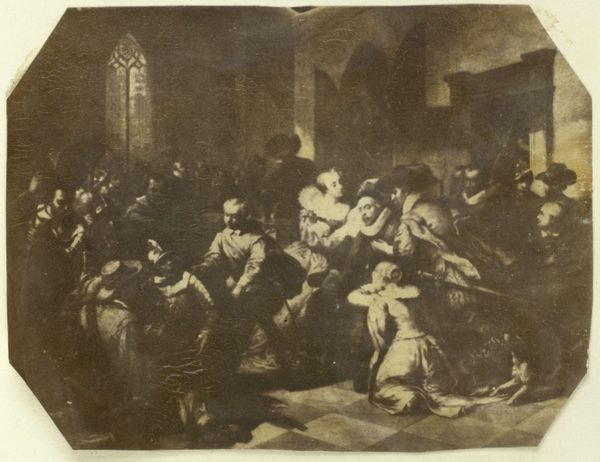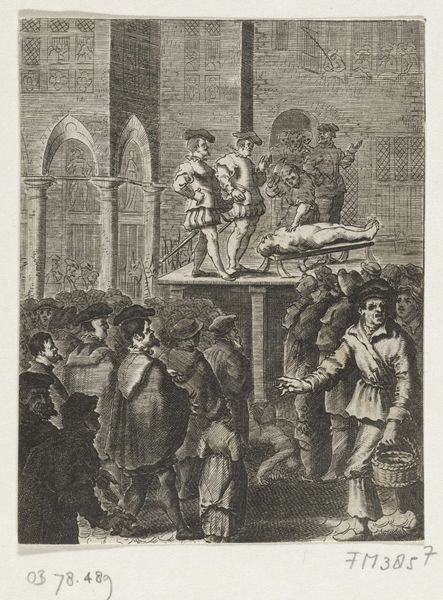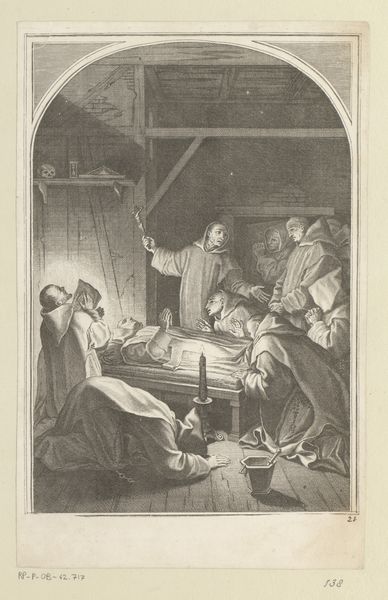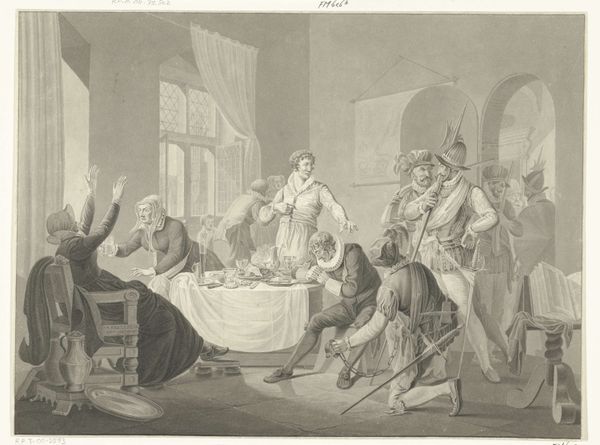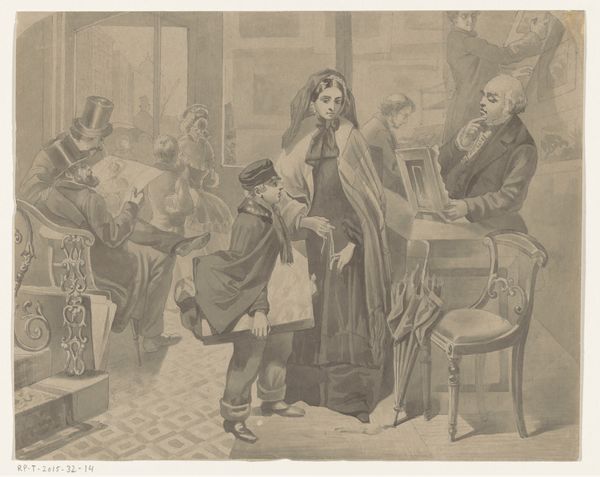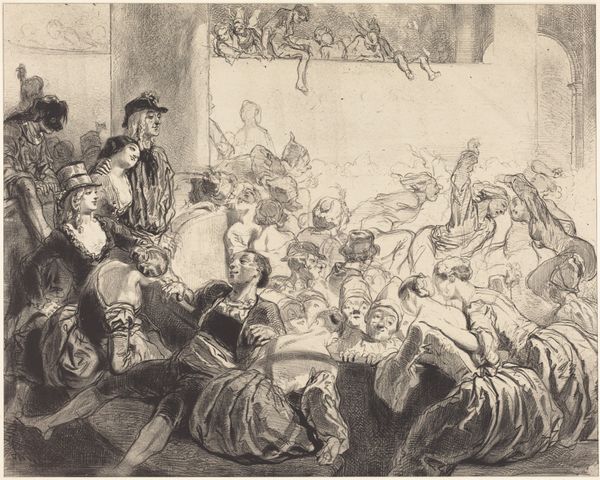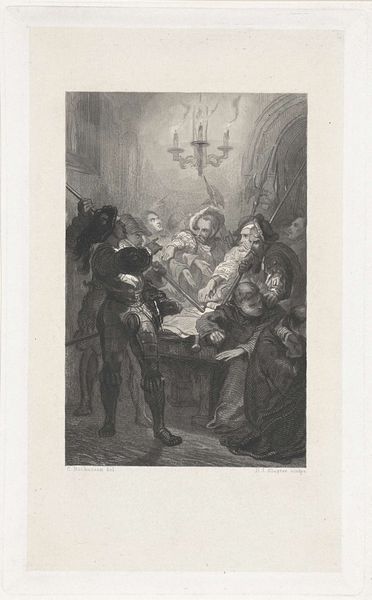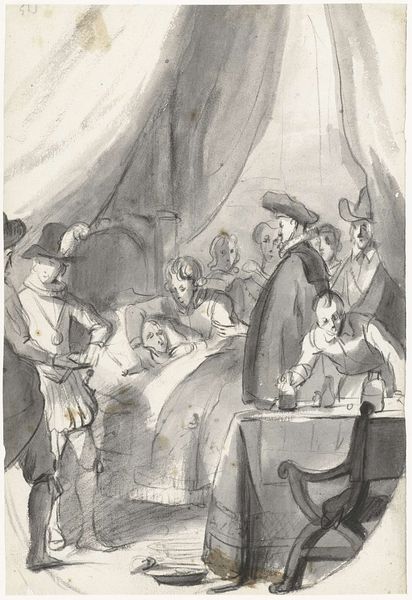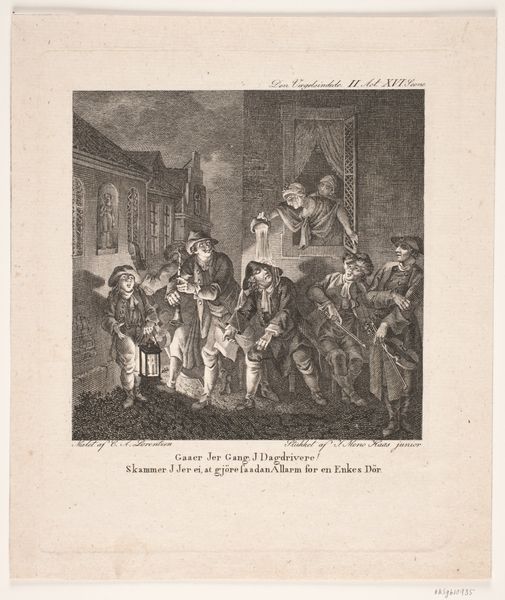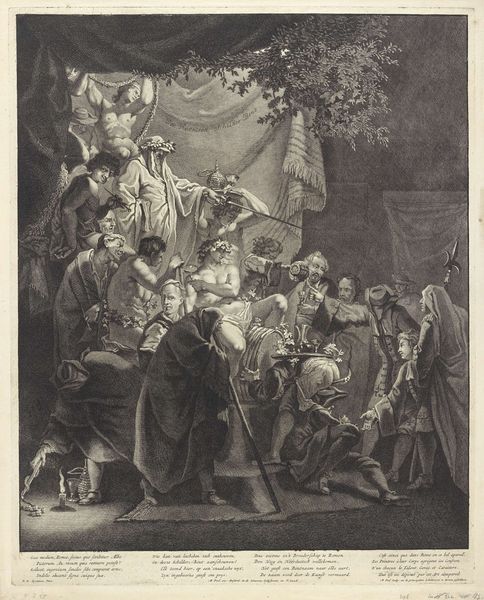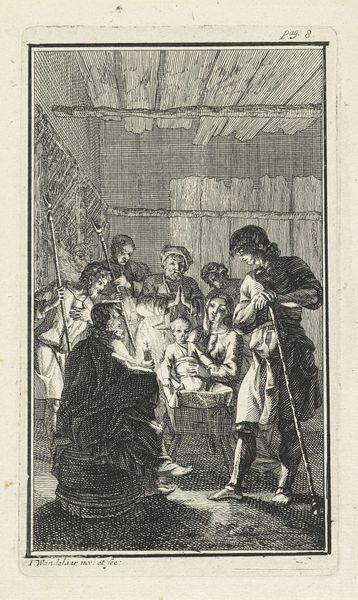
Dimensions: plate: 41.6 x 31 cm (16 3/8 x 12 3/16 in.) sheet: 42.1 x 31.2 cm (16 9/16 x 12 5/16 in.)
Copyright: National Gallery of Art: CC0 1.0
Editor: This is Franz Anton Maulbertsch’s "The Institution of the Eucharist," an engraving from around 1765. It’s…intense. All the figures seem to be reaching, reacting to something unseen. What’s your take on this scene? Curator: It's interesting you say 'intense.' As a historian, I'm drawn to how such images functioned within the public sphere of the time. This isn't simply a depiction of a biblical event; it’s a carefully constructed visual statement. Think about the socio-political power structures at play in the 18th century. How did the Church use imagery like this to reinforce its authority? Editor: So, this image is less about the event itself and more about how the Church wanted people to perceive that event? Curator: Precisely! Notice the theatrical lighting and dramatic gestures, hallmark elements of the Baroque style. What does this visual drama communicate about the Church’s message? Editor: It feels like they're trying to inspire awe, even obedience. The angel figures at the top almost feel like they’re sanctioning what’s happening below. Curator: Exactly! And consider who this print was meant for. Was it for widespread consumption or a more elite audience? The answer shapes how we understand its role in society. Editor: So, was this something most people saw, or was it mainly for wealthier folks? I guess that matters for thinking about its impact. Curator: Knowing more about the print’s circulation reveals whether it was a tool for mass indoctrination or for reinforcing the faith amongst a privileged class. Either way, this engraving served a specific purpose, beyond just illustrating a biblical story. Editor: Wow, I hadn't really considered how much the audience matters in understanding the message. I’ll definitely keep that in mind when looking at other works of art from this time. Curator: Seeing art as more than just aesthetic objects – recognizing them as active players in social and political narratives – that’s the key.
Comments
No comments
Be the first to comment and join the conversation on the ultimate creative platform.

